On View
Alex Da Corte Channels Frankenstein’s Monster for His Spooky, Goofy Solo Debut in Europe
For his first major solo show in Europe, the American artist has created an eerie, dystopian environment.
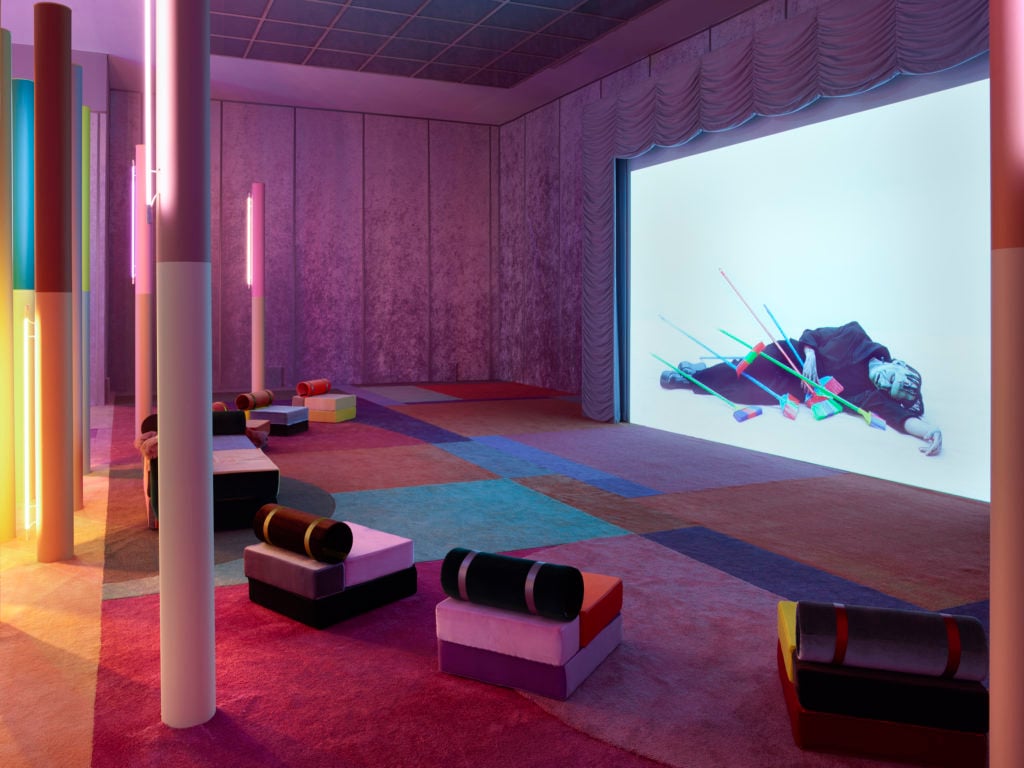
For his first major solo show in Europe, the American artist has created an eerie, dystopian environment.

Caroline Elbaor

For his first major solo exhibition in Europe, American artist Alex Da Corte has employed the entirety of the 6,500-square-foot space at Vienna Secession. The result is Slow Graffiti, a mise-en-scène that echoes a dystopian cityscape and heavily references the story of Frankenstein to explore what it means to be human.
Since receiving his MFA from Yale in 2010, Da Corte has become known for staging immersive installations in unassuming spaces, that incorporate sculpture and video that question mainstream and commercial culture.
With Slow Graffiti, the new work made specifically for Vienna Secession, Da Corte has created a moody, otherworldly environment accentuated by its soft lighting, velvet walls, and patchwork carpet. A sense of unease, however, permeates the installation: dysfunctional objects—such as an upturned umbrella, a single rain boot, or a broken bag of peanuts—are scattered around the room. They are assembled, according to the press release, in the spirit of Doctor Frankenstein.
This disquieting atmosphere is further emphasized by Da Corte’s video, which is screened every 20 minutes in a hushed sitting area. The work is a shot-for-shot remake of Jørgen Leth’s 1967 short film The Perfect Human, which in its original iteration depicted the “perfect” man and woman and was set in a stark white room, as though its inhabitants were zoo animals or test subjects.
Da Corte’s interpretation shows the artist either playing the role of Frankenstein’s monster or masked as the actor Boris Karloff—who is known for his own portrayal of the monster in the 1931 horror film Frankenstein.
“Slow Graffiti” is rife with literary and cultural references. Da Corte cites the lyrics from a Belle and Sebastian song, a quote from Boris Karloff, and, finally, Oscar Wilde’s The Picture of Dorian Gray to capture the overall intention of the exhibition: “Sin is a thing that writes itself across a man’s face. It cannot be concealed.”
See more images of the exhibition below:
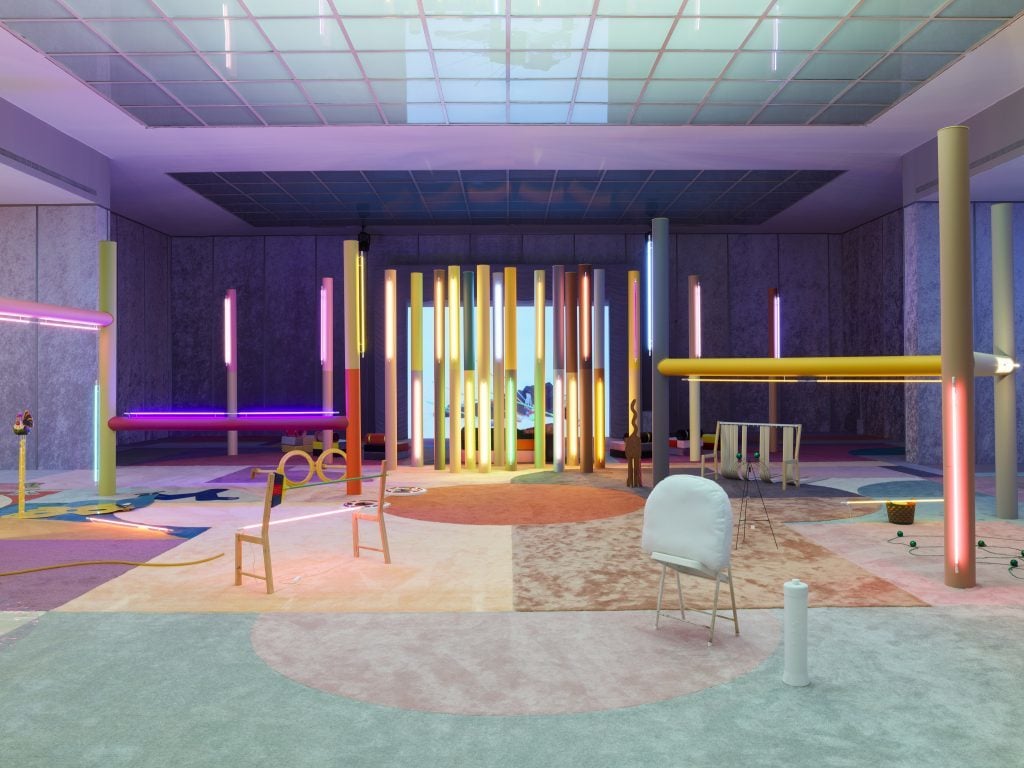
Alex Da Corte, “Slow Graffiti” installation view, Secession 2017. Courtesy of Maccarone, New York, Gió Marconi, Milan and David Risley Gallery, Copenhagen, Photo Sophie Thun.
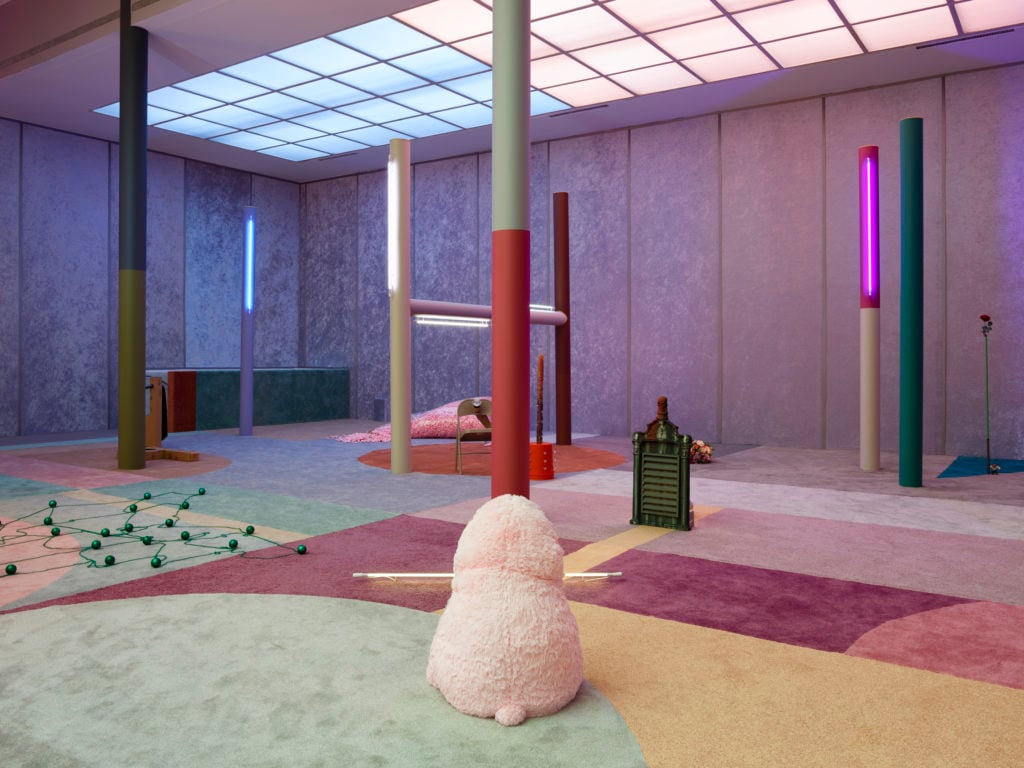
Alex Da Corte, “Slow Graffiti” installation view, Secession 2017. Courtesy of Maccarone, New York, Gió Marconi, Milan and David Risley Gallery, Copenhagen. Photo Sophie Thun.
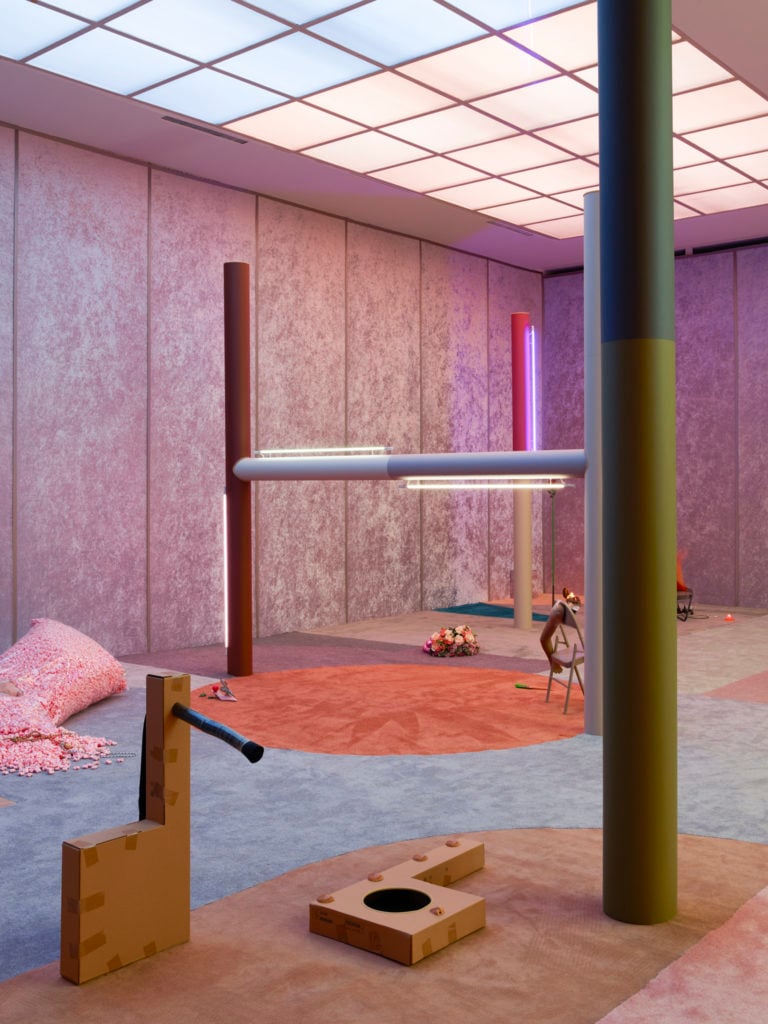
Alex Da Corte, “Slow Graffiti” installation view, Secession 2017. Courtesy of Maccarone, New York, Gió Marconi, Milan and David Risley Gallery, Copenhagen. Photo Sophie Thun.
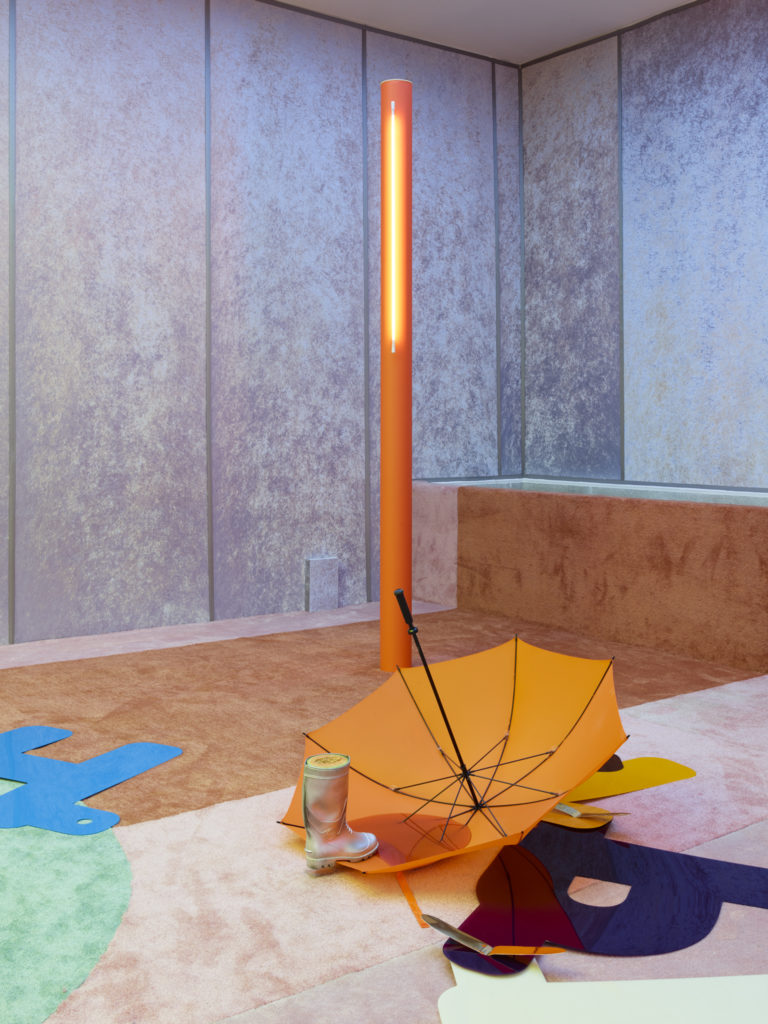
Alex Da Corte, “Slow Graffiti” installation view, Secession 2017. Courtesy of Maccarone, New York, Gió Marconi, Milan and David Risley Gallery, Copenhagen. Photo Sophie Thun.
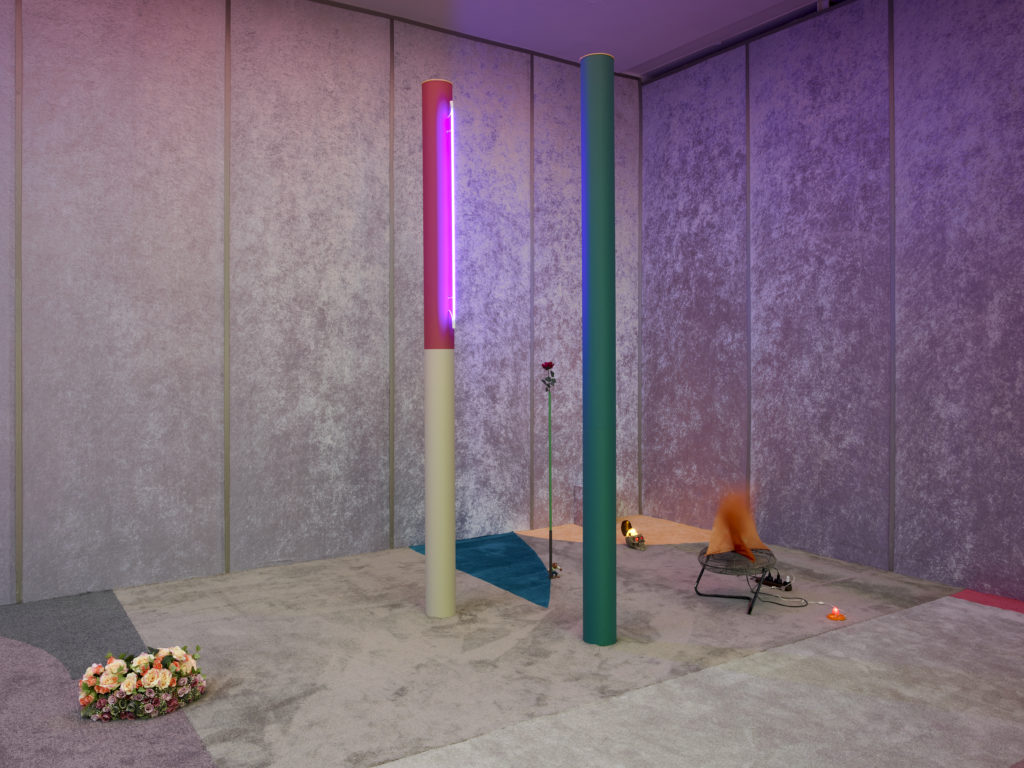
Alex Da Corte, “Slow Graffiti” installation view, Secession 2017. Courtesy of Maccarone, New York, Gió Marconi, Milan and David Risley Gallery, Copenhagen. Photo Sophie Thun.

Alex Da Corte, “Slow Graffiti” installation view, Secession 2017. Courtesy of Maccarone, New York, Gió Marconi, Milan and David Risley Gallery, Copenhagen. Photo Sophie Thun.
Alex da Corte, “Slow Graffiti” is on view at Vienna Secession through September 3, 2017.